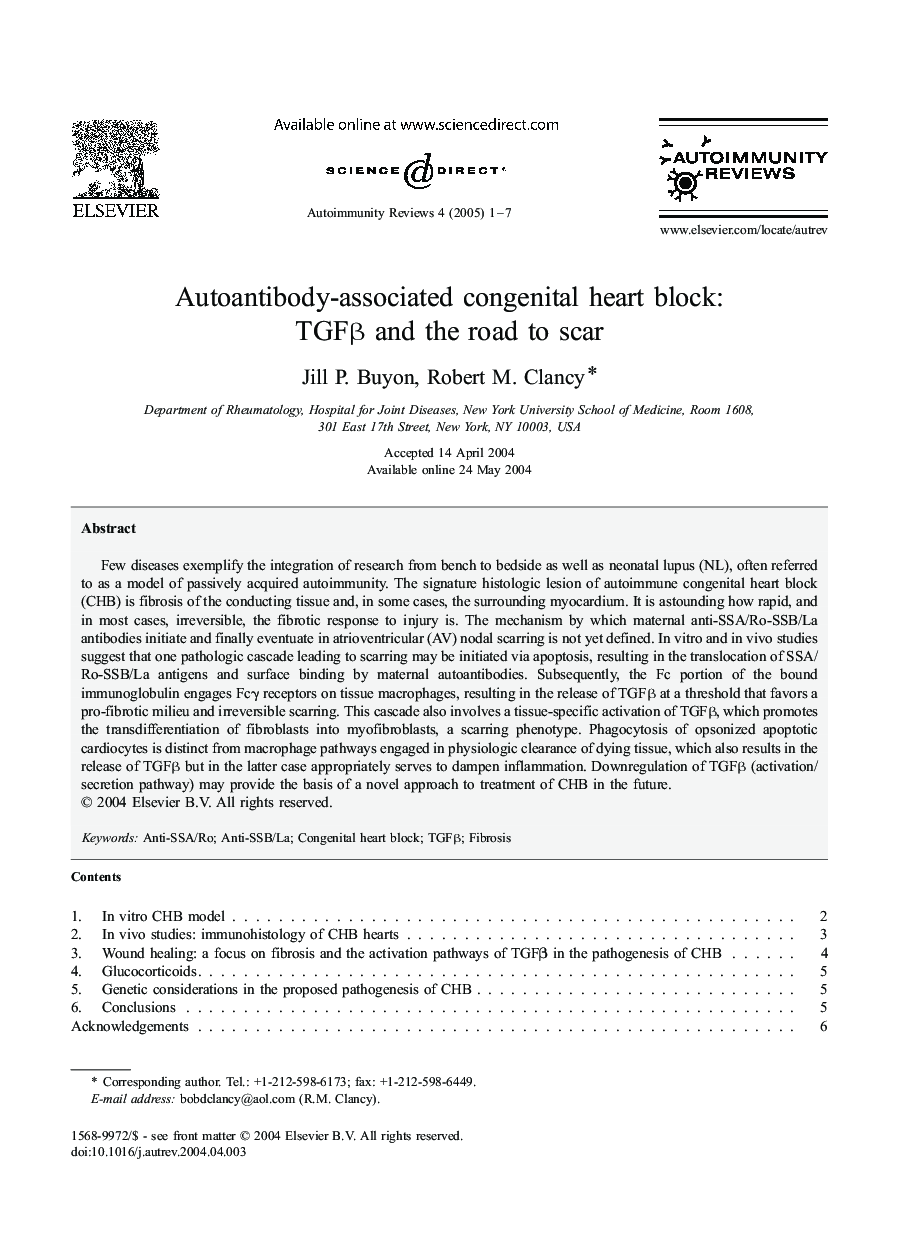| Article ID | Journal | Published Year | Pages | File Type |
|---|---|---|---|---|
| 9261760 | Autoimmunity Reviews | 2005 | 7 Pages |
Abstract
Few diseases exemplify the integration of research from bench to bedside as well as neonatal lupus (NL), often referred to as a model of passively acquired autoimmunity. The signature histologic lesion of autoimmune congenital heart block (CHB) is fibrosis of the conducting tissue and, in some cases, the surrounding myocardium. It is astounding how rapid, and in most cases, irreversible, the fibrotic response to injury is. The mechanism by which maternal anti-SSA/Ro-SSB/La antibodies initiate and finally eventuate in atrioventricular (AV) nodal scarring is not yet defined. In vitro and in vivo studies suggest that one pathologic cascade leading to scarring may be initiated via apoptosis, resulting in the translocation of SSA/Ro-SSB/La antigens and surface binding by maternal autoantibodies. Subsequently, the Fc portion of the bound immunoglobulin engages Fcγ receptors on tissue macrophages, resulting in the release of TGFβ at a threshold that favors a pro-fibrotic milieu and irreversible scarring. This cascade also involves a tissue-specific activation of TGFβ, which promotes the transdifferentiation of fibroblasts into myofibroblasts, a scarring phenotype. Phagocytosis of opsonized apoptotic cardiocytes is distinct from macrophage pathways engaged in physiologic clearance of dying tissue, which also results in the release of TGFβ but in the latter case appropriately serves to dampen inflammation. Downregulation of TGFβ (activation/secretion pathway) may provide the basis of a novel approach to treatment of CHB in the future.
Keywords
Related Topics
Life Sciences
Immunology and Microbiology
Immunology
Authors
Jill P. Buyon, Robert M. Clancy,
